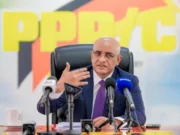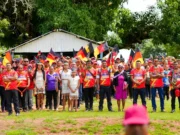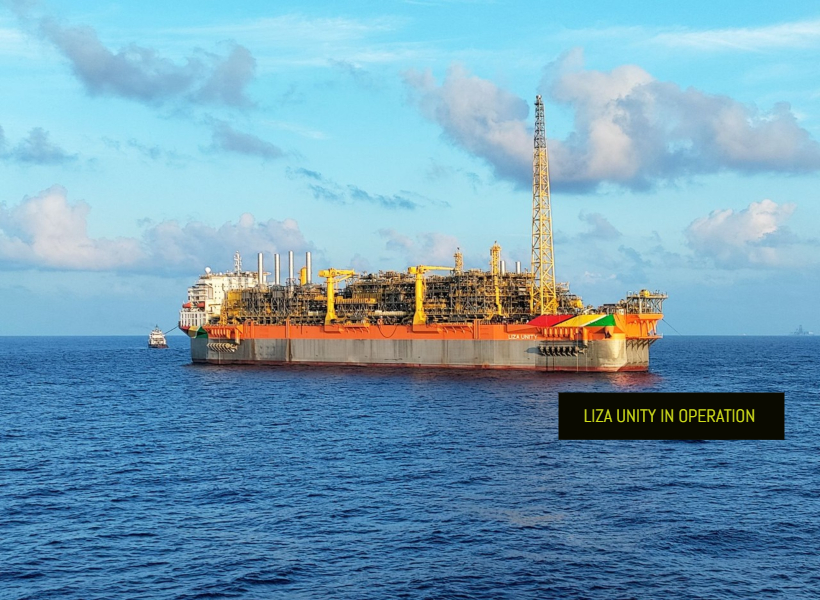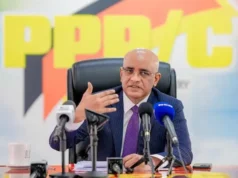By Sueann Wickham
Guyana has become a focal point for global discussions on the oil and gas industry, thanks to the discovery of vast oil reserves by an ExxonMobil-led consortium back in 2015. These resources have already brought in over US$2.2B in royalties and profits from 2020 to 2023, making it a game-changing revenue earner for the South American nation.
While ExxonMobil Corporation through its affiliate, Esso Exploration and Production Guyana Limited (EEPGL) has been at the forefront of this game changing industry for Guyana, the country’s oil history did not start with this giant, as many mistakenly believe.
The country’s history of oil exploration dates back to the 1910s, when exploration efforts first started onshore.
According to records from the Ministry of Natural Resources and the Guyana Geology and Mines Commission (GGMC), the first exploration wells were drilled in 1916 in the Waini area of the North West District.
The Bath Sugar Estate on the West Coast of Berbice also had a well drilled there in 1926, and the gas produced was used domestically for decades.
In 1938, the first oil prospection licence was issued to the Trinidad Leaseholds Company Ltd, which partnered with Investments Corporation and Central Mining to begin the first integrated oil exploration program in Guyana. While several attempts were made to find oil in the following decades, most were unsuccessful.
Then in the 1940s, companies such as Shell and Total Energies conducted geological surveys and drilled wells in the Takatu basin in Region 9 as they continued their quest to discover oil in South America.
In 1965, Conoco and Shell were granted licences for offshore and onshore exploration, which sparked another burst of exploration activities.
Despite many offshore and onshore projects being conducted during the 1970s, they were largely unsuccessful. The Guyanese government still pushed ahead by promoting and attracting investors for exploration in the emerging petroleum industry, while receiving support from the World Bank, which continues to support the country in developing its new oil and gas sector.
Unfortunately, proposals for offshore wells in the 1980s and early 1990s were frustrated by companies’ inability to raise funds. Ironically, many of the players in the oil and gas industry in Guyana today were involved in projects during this period.
In 1994, oil exploration came to a halt due to a lack of funding for drilling programmes. To resuscitate exploration, the Guyanese government entered into a promotional agreement with PETREL in October 1995, granting them exclusive rights to promote the Georgetown offshore Block and attract companies to explore the area. Those efforts unfortunately bore no fruit.
In 1999, ExxonMobil entered Guyana through its subsidiary Esso Exploration and Production Guyana Limited while taking Shell as its partner to explore one of the largest concessions ever granted to a company in this hemisphere, that is the Stabroek Block. The concession which totals 600 blocks is equivalent to 1100 blocks in the Gulf of Mexico. During its exploration activities, the company unfortunately experienced aggressive tactics from Venezuela and was forced to activate the force majeure provisions under its contract with the Guyana government which subsequently led to the halting of exploration activities in 2000. This was just the beginning of border disputes between Guyana’s neighbouring countries and oil companies engaging in exploration activities offshore.
In 2000, CGX attempted to spud a well on its Eagle Prospect, but operations ceased due to a border dispute when Surinamese gunboats claimed the drilling rig was in Surinamese waters. Following the border dispute, the Guyanese government formally commenced binding dispute settlement procedures under the United Nations Convention on the Law of the Sea (UNCLOS). The dispute with Suriname and the unresolved maritime border with Venezuela prevented exploration on the Pomeroon Block, a 2.8 million-acre 100% interest block adjacent to Venezuela’s border, despite ON ENERGY conducting 2D seismic and CGX’s purchase of the block.
CGX also drilled three onshore wells on its Berbice Block in 2005, through its operating stake in an ON ENERGY joint venture, but all were considered dry holes. Further, in September 2007, the maritime border dispute with Suriname was finally settled in Guyana’s favour, encouraging exploration once again.
ON Energy has since been dissolved, however, CGX is currently the holder of the Corentyne licence and has since relinquished the Berbice and Demerara blocks due ton the company being cash strapped.
When Guyana thought it saw an end to interference in exploration activities, problems arose yet again with Venezuela in 2013 when Anadarko Petroleum Corporation was conducting exploration research offshore Guyana and the Venezuelan navy intercepted and seized its research vessel, halting operations within the Roraima Block. The boat was forced to the Venezuelan island of Margarita and sparked a robust protest from Guyana’s government.

Two years later, specifically in May 2015, ExxonMobil’s affiliate made a significant oil find in the Stabroek Block with the discovery of the Liza-1 well, which bore more than 295 feet of high-quality oil-bearing sandstone reservoirs. Just prior to this historic turn of events, EEPGL had taken Hess Corporation and CNOOC Petroleum Guyana Limited as its new partners.
Following that, the Liza Phase 1 development began in December 2019, with a peak production capacity of 120,000 barrels of oil per day (bpd). The Liza Phase 2 project also began production in April 2021, with a peak capacity of 220,000 bpd. The third project at the Payara development is expected to begin production in 2024, with a peak capacity of 220,000 bpd.
The company also has three other projects on stream which are the Yellowtail Project, the Uaru Project and the Whiptail Project.
The Yellowtail will target 250,000 barrels per day with six drill centres planned to target the Yellowtail and Redtail resources with 51 wells; 26 production and 25 water and gas injection wells. Production for this project is expected to begin in 2025.
As for the Uaura Project, it is expected to produce 1.3 billion barrels of oil equivalent and will target 40 – 76 development wells. The oil production capacity for this project is 220,000 – 275,000 bpd and the oil is expected by 2026.
The Whiptail Project will target approximately 40 – 65, will have an oil production capacity of 220,000 – 275,000 bpd and first oil is expected late 2027 – early 2028.
Overall, the Stabroek Block has unlocked 11 billion barrels of oil resources and over 35 discoveries.
After searching for oil for 99 years, and finally striking black gold in the Stabroek Block in 2015, Guyana now hopes to replicate this success with her maiden auction, the 2022 Licensing Round, which will see 14 of Guyana’s offshore blocks going up for auction.
To encourage a ramp-up of exploration outside of the Stabroek Block, the government decided to facilitate the offshore licensing round which places 14 blocks on auction three of which are deepwater blocks and 11 are shallow water blocks which possess an estimated 25 billion oil-equivalent barrels.
According to the MNR’s licensing schedule, the award of contracts is set for August this year.
From the early exploration wells in the 1910s to the recent discoveries of ExxonMobil in the Stabroek Block, Guyana has a long and storied history in the oil and gas industry. Despite several setbacks and obstacles over the years, the country has persevered and is now a significant player in the global oil market.
With two oil fields already in production and more projects on the horizon, the future looks bright for Guyana’s oil and gas sector, and it seems that the country is poised to continue its rise as a major oil-producing nation in the years to come.













